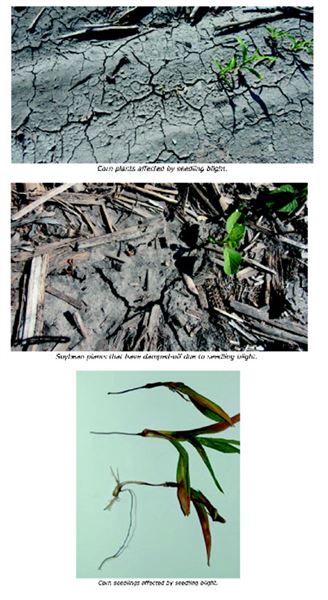Seedling Blight In Corn And Soybean
URBANA, ILL.
Although much of the
state has been relatively
dry this spring, seedling
blight has been observed in
some areas that have received
more frequent rain. These
problematic fields generally
were planted early, followed
by cool and wet conditions.
Seedling blight of corn and soybean can be
caused by multiple pathogens, including Fusarium
species, Rhizoctonia solani, Pythium
species, Phytophthora sojae (soybean only), and
others. The major symptoms being observed are
poor stands, stunted plants, damping-off, discolored
roots (and mesocotyls), and poorly developed
root systems. These symptoms may be
caused by factors other than diseases, so accurate
diagnosis is important. For the best accuracy,
pathogen isolations may need to be done
by a plant diagnostic lab such as the University
of Illinois Plant Clinic.
Management of seedling blight can be difficult,
but an accurate diagnosis may allow better
management the following year through selection
of specific fungicide seed treatments that
may be more effective against certain
pathogens. Δ
DR. CARL A. BRADLEY: Extension Plant Pathologist/
Assistant Professor, University of Illinois
